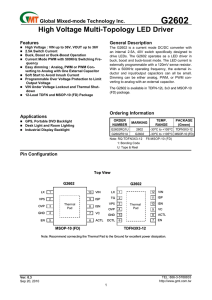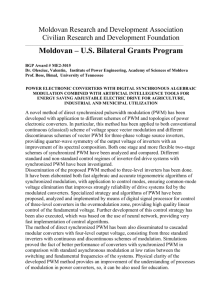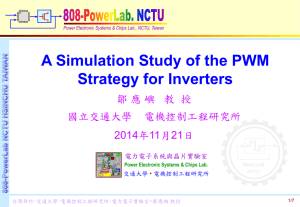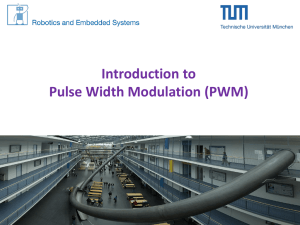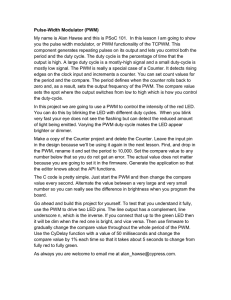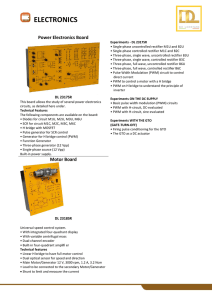Five-leg inverter PWM technique for reduced switch count two
advertisement
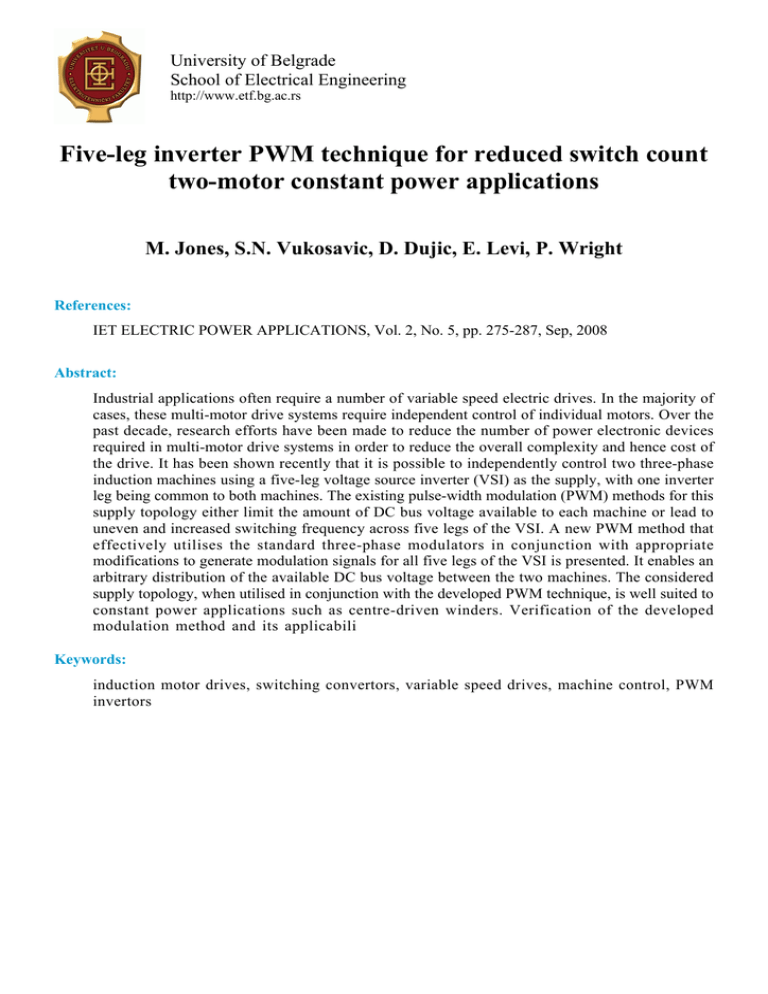
University of Belgrade School of Electrical Engineering http://www.etf.bg.ac.rs Five-leg inverter PWM technique for reduced switch count two-motor constant power applications M. Jones, S.N. Vukosavic, D. Dujic, E. Levi, P. Wright References: IET ELECTRIC POWER APPLICATIONS, Vol. 2, No. 5, pp. 275-287, Sep, 2008 Abstract: Industrial applications often require a number of variable speed electric drives. In the majority of cases, these multi-motor drive systems require independent control of individual motors. Over the past decade, research efforts have been made to reduce the number of power electronic devices required in multi-motor drive systems in order to reduce the overall complexity and hence cost of the drive. It has been shown recently that it is possible to independently control two three-phase induction machines using a five-leg voltage source inverter (VSI) as the supply, with one inverter leg being common to both machines. The existing pulse-width modulation (PWM) methods for this supply topology either limit the amount of DC bus voltage available to each machine or lead to uneven and increased switching frequency across five legs of the VSI. A new PWM method that effectively utilises the standard three-phase modulators in conjunction with appropriate modifications to generate modulation signals for all five legs of the VSI is presented. It enables an arbitrary distribution of the available DC bus voltage between the two machines. The considered supply topology, when utilised in conjunction with the developed PWM technique, is well suited to constant power applications such as centre-driven winders. Verification of the developed modulation method and its applicabili Keywords: induction motor drives, switching convertors, variable speed drives, machine control, PWM invertors



